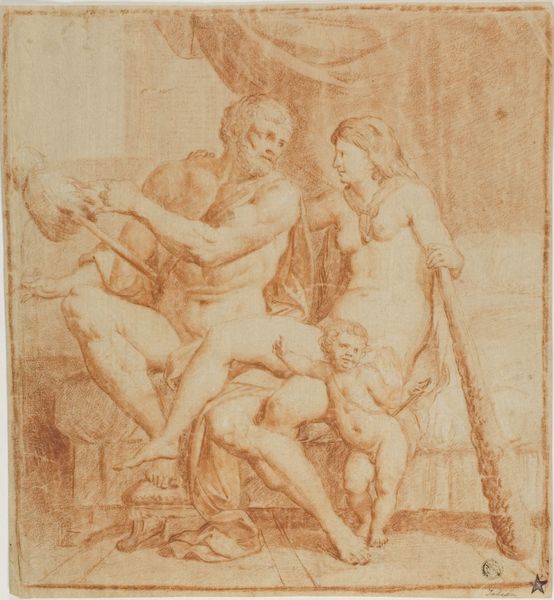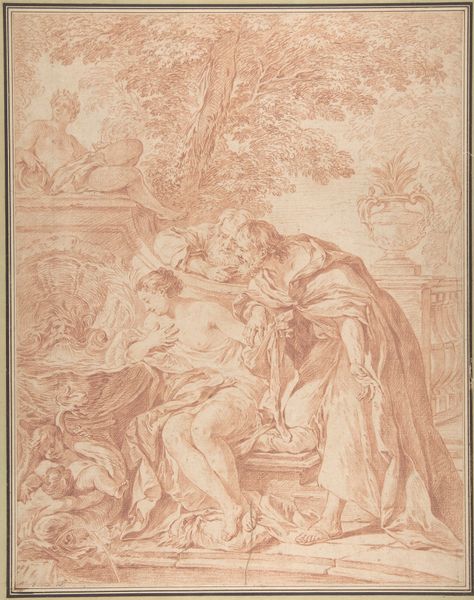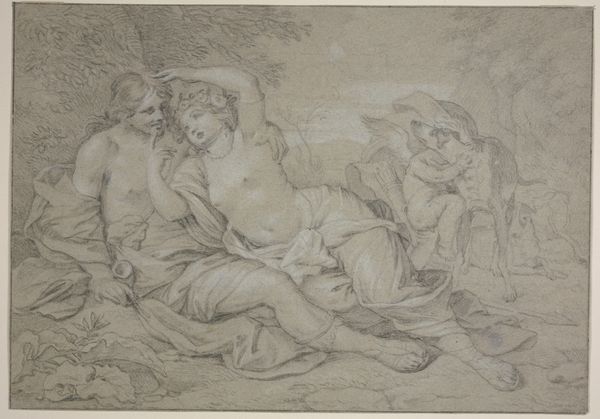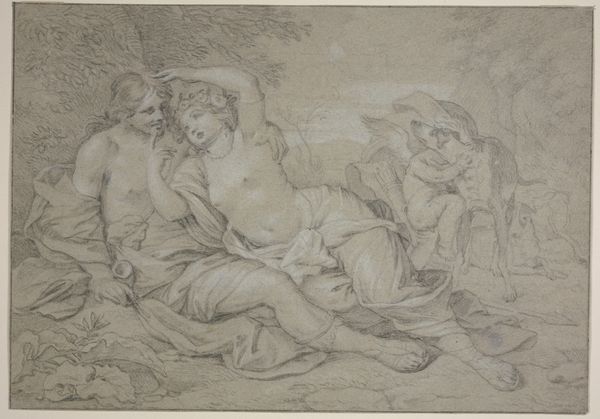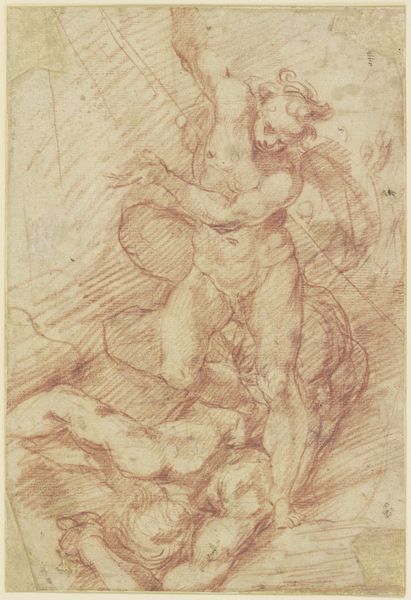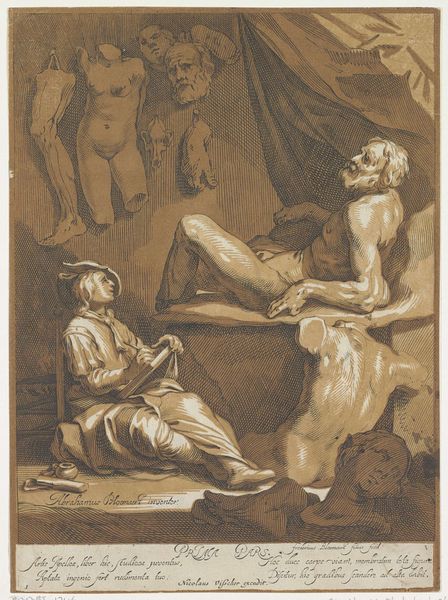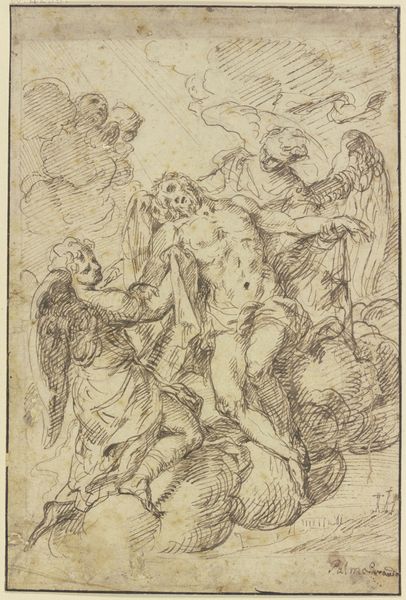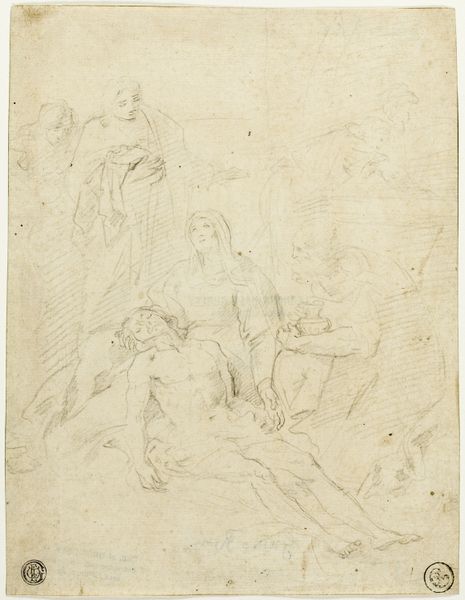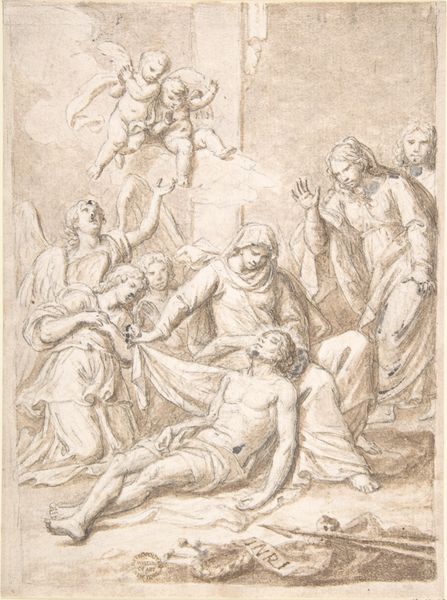
drawing, print, charcoal
#
drawing
#
baroque
# print
#
charcoal drawing
#
figuration
#
charcoal art
#
line
#
charcoal
#
history-painting
Dimensions: 7-7/16 x 5-1/4 in. (18.9 x 13.4 cm)
Copyright: Public Domain
Curator: This intense drawing is titled "Sacrifice of Isaac." Though the artist is unknown, it's estimated to be from the 17th century. It can be found here at the Metropolitan Museum of Art. It is rendered in charcoal. What's grabbing your attention? Editor: The sheer rawness, I think. The sketchy charcoal lines give it an unfinished feel, a sense of immediacy. It bypasses a lot of artistic polish and speaks directly to the emotional core of this biblical moment. There is something uneasy and not pretty about it. Curator: The imagery speaks volumes, doesn't it? The averted gaze of Isaac, the looming angel – each figure represents an aspect of faith and obedience in extremis. Charcoal as a medium is fascinating; it allows for deep blacks and delicate grays. A contrast reflecting the story's stark choice between life and death, obedience and utter despair. It heightens the symbolic tension, creating an emotive echo of past cultural anxieties surrounding religious zeal and power. Editor: Absolutely. And the composition—it's not idealized. The figures are huddled together, almost claustrophobic, mirroring the psychological pressure cooker of the narrative. This piece reflects how power intersects with belief in very visceral, unromantic ways. Where do you see the artist's intervention beyond depicting what is described in the holy book? Curator: Well, think about the role of the angel. In many portrayals, the angel is assertive, a clear agent of divine intervention. Here, the angel feels…almost hesitant, as though physically struggling to prevent the act. This could subtly question absolute divine command and human interpretation, speaking perhaps to contemporary philosophical discourse questioning authority and religious absolutism in the 17th century. The work then becomes less a celebration and more an open exploration of power dynamics. Editor: So the artist uses symbolism not to confirm dogma, but to question it within the context of a specific historical moment. I appreciate the subtle shift you’ve identified there. That perspective forces a confrontation with how institutions use art to reinforce narratives. Curator: And how artists use the same medium to question and complicate these established narratives, I find that extremely interesting. This piece is about more than just an event in the Bible; it encapsulates faith, doubt, obedience, and resistance, all captured with charcoal. Editor: Well said. I initially responded to the raw emotion. But it's this interwoven complexity of power and obedience that keeps me thinking.
Comments
No comments
Be the first to comment and join the conversation on the ultimate creative platform.
